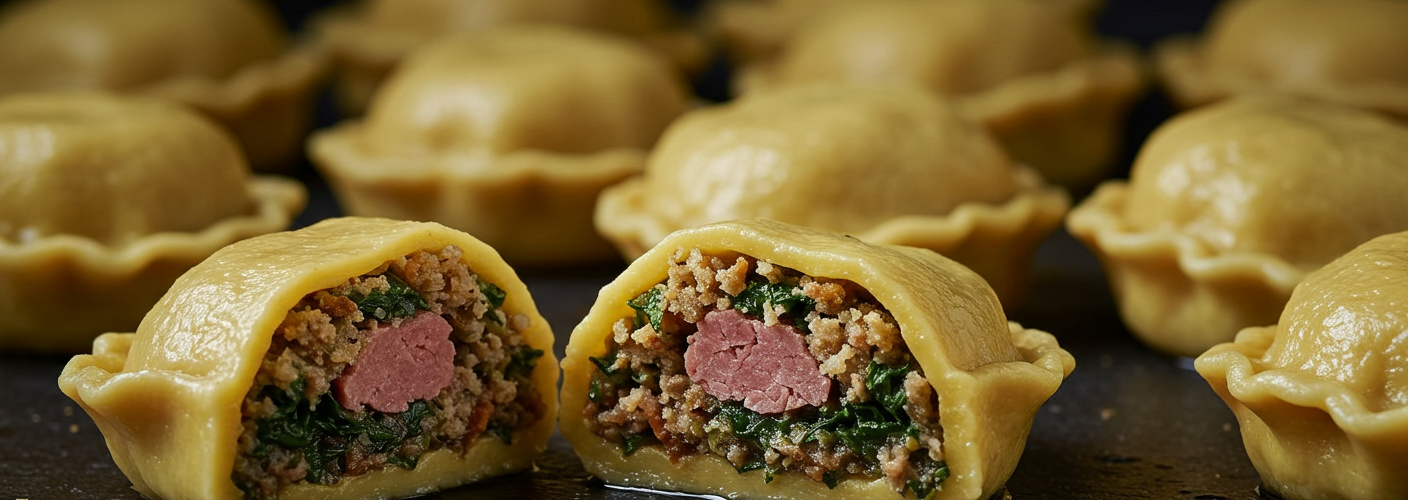If there’s one dish that captures the heart and soul of German cuisine, it’s Maultaschen. Often dubbed “Swabian ravioli,” this comforting dish originates from the Swabia region of Germany, known for its rich culinary traditions and hearty fare. Maultaschen is more than just a meal; it’s a slice of history, culture, and a celebration of flavors that speaks to the heart of home cooking.
At its core, Maultaschen consists of a delicate pasta dough, expertly crafted to encase a savory filling. Traditionally, the filling features a delightful blend of minced meat, smoked meat, and tender spinach. The addition of bread crumbs not only enhances the texture but also serves to absorb the flavors of the herbs and spices that season the mixture. Each bite of Maultaschen is a journey through layers of flavor that reflect the rustic qualities of the Swabian region.
A Symbol of Tradition
Maultaschen is steeped in tradition, with its history tracing back to the 18th century. According to local lore, Maultaschen was created by monks who sought a way to hide meat during Lent. By encasing the meat in pasta, they could adhere to their fasting rules while enjoying the robust flavors of their culinary creations. Over the years, this humble dish evolved, becoming a household favorite that still holds a special place in German culture today.
Preparation: An Art in Itself
Making Maultaschen is an art that many families take pride in passing down through generations. The process begins with crafting the pasta dough, which is typically made from flour, eggs, and a pinch of salt. The dough is rolled out thin, ensuring that it will yield tender, yet resilient pockets once filled.
The filling itself is where the magic happens. A mix of minced meats, such as beef or pork, combined with smoked meats adds a depth of flavor that defines Maultaschen. Fresh spinach provides a nutritious touch, while breadcrumbs contribute to the filling’s heartiness, binding it all together with a satisfying texture. Seasoning the mixture with a medley of herbs—such as parsley, nutmeg, or chives—infuses the filling with an aromatic quality that tantalizes the senses.
Culinary Versatility
Maultaschen can be served in a variety of ways, showcasing its culinary versatility. Traditionally, they are simmered in broth, providing a warm and nourishing dish perfect for cooler seasons. Alternatively, some prefer to pan-fry Maultaschen until they reach a golden-brown perfection, adding a delightful crunch to the dish. Each preparation method allows for a unique experience, whether it’s enjoyed as a comforting bowl of soup or a crispy delight.
Modern Interpretations
In recent years, Maultaschen has seen a resurgence in popularity, with chefs experimenting with innovative variations of the classic recipe. Vegetarian versions have emerged, substituting traditional meat with flavorful alternatives such as mushrooms, lentils, or seasonal vegetables, ensuring that everyone can enjoy this beloved dish.
Conclusion
In summary, Maultaschen is a remarkable testament to German culinary tradition, offering a rich tapestry of flavors, textures, and history. Whether served at family gatherings, in festive celebrations, or enjoyed as a comforting meal on a chilly evening, Maultaschen has earned its place as a cherished staple in kitchens across Germany and beyond. Its blend of simple ingredients brought together with love and care makes it not just a dish, but a warm embrace that invites everyone to savor the goodness of home-cooked meals. So, the next time you’re looking for a comforting meal or a taste of tradition, consider indulging in a plate of these delightful dumplings.




Add comment